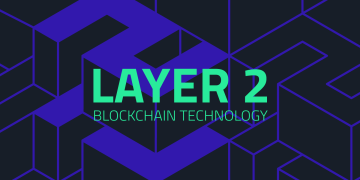As the world becomes increasingly digitized, the limitations of the current Internet model—commonly referred to as Web2—are being exposed. Dominated by centralized platforms, data silos, and monetization models that often exploit users, Web2 has delivered global connectivity at the expense of individual control. In response, a new vision for the Internet is emerging: Web3, powered by blockchain technology and exemplified by innovations like Decentralized Finance (DeFi).
Web3 aims to create an open, trustless, and permissionless digital ecosystem in which users, not corporations, own and govern data, identity, assets, and digital services. DeFi, as a major application layer of Web3, reimagines financial services without centralized intermediaries—providing open access to lending, borrowing, saving, trading, and more via blockchain-based protocols.
This article explores whether Web3 and DeFi have the potential to become mainstream pillars of the next-generation Internet—and what it will take to get there.
1. Understanding Web3 and DeFi
What is Web3?
Web3 refers to the evolution of the Internet into a decentralized, user-owned platform enabled by blockchain, smart contracts, and token economies. It contrasts sharply with Web2, where centralized platforms such as Google, Meta, and Amazon control data, access, and monetization.
Key principles of Web3:
- Decentralization: Infrastructure and governance are distributed, not owned by a single entity.
- User Sovereignty: Individuals control their data, digital identity, and assets.
- Interoperability: Services and platforms are composable, transparent, and modular.
- Tokenization: Economic incentives are integrated via native crypto tokens and NFTs.
What is DeFi?
DeFi is a subset of Web3 that offers open, blockchain-based alternatives to traditional financial systems. By replacing banks and financial intermediaries with smart contracts, DeFi platforms enable anyone with an Internet connection to access financial services.
DeFi services include:
- Lending and Borrowing (e.g., Aave, Compound)
- Decentralized Exchanges (DEXs) (e.g., Uniswap, SushiSwap)
- Stablecoins and Synthetic Assets (e.g., DAI, Frax, Synthetix)
- Yield Farming and Liquidity Mining
- Insurance, Derivatives, and Asset Management
2. Advantages That Position Web3 and DeFi for Mainstream Adoption
A. Disintermediation and Efficiency
Smart contracts automate complex financial logic without human intervention, reducing costs and increasing transparency. Transactions are executed 24/7 with near-instant settlement, eliminating the need for clearinghouses or custodians.
B. Global Accessibility and Inclusion
DeFi and Web3 platforms are accessible to anyone with a crypto wallet, regardless of nationality, income level, or banking status. This presents a breakthrough for over a billion people who are unbanked or underbanked.
C. Ownership and Monetization
Web3 empowers creators and users to monetize their content, data, and attention directly. In DeFi, users earn yields by providing liquidity or staking tokens, instead of relying on centralized platforms for revenue sharing.
D. Transparency and Auditability
All on-chain transactions are verifiable and immutable. This enhances trust in the system and reduces fraud, particularly in lending, trading, and governance processes.
E. Programmability
DeFi protocols are built as composable building blocks. Developers can create new financial products by combining existing protocols—accelerating innovation in ways traditional finance cannot.
3. Adoption Challenges That Web3 and DeFi Must Overcome
Despite their promise, both Web3 and DeFi face substantial barriers to widespread adoption.
A. User Experience and Accessibility
Current interfaces are often difficult to use, especially for non-technical users. Wallet management, gas fees, and private key security are unfamiliar concepts that hinder mainstream engagement.
B. Scalability and Network Congestion
Most DeFi activity occurs on Ethereum, which has historically faced congestion and high fees. Layer-2 solutions and competing chains (like Solana, Avalanche, and LayerZero) are making progress, but scalability remains a constraint.
C. Security Risks
DeFi protocols are vulnerable to smart contract bugs, oracle manipulation, and governance exploits. Hundreds of millions of dollars have been lost due to vulnerabilities or design flaws.
D. Regulatory Uncertainty
Governments worldwide are still defining how to classify, regulate, and tax decentralized assets and protocols. DeFi’s pseudonymous and borderless nature poses challenges for compliance with existing laws (e.g., AML, KYC).
E. Economic Volatility
The crypto market is highly volatile. Users can experience sudden losses from market crashes, impermanent loss, or liquidity collapses—dampening trust among risk-averse users and institutions.
4. Institutional and Corporate Interest in Web3 and DeFi
Despite early resistance, institutional players are increasingly exploring DeFi and Web3 strategies:
- Traditional banks are experimenting with blockchain-based settlement, custody services, and tokenized assets.
- Fintech companies are integrating stablecoins and DeFi protocols for remittances, payments, and savings.
- Big Tech firms are building Web3-compatible infrastructure, such as decentralized storage and identity layers.
- Investment firms are allocating capital to DeFi protocols, Web3 startups, and DAO governance.
This convergence suggests that Web3 is not merely a radical alternative, but a framework that may augment or replace parts of traditional systems over time.

5. The Role of Decentralized Governance (DAOs)
A unique feature of Web3 is the emergence of Decentralized Autonomous Organizations (DAOs)—blockchain-based communities that govern platforms and protocols collectively.
DAOs enable:
- Transparent decision-making
- Token-based voting on proposals
- Decentralized treasury management
- Global collaboration without corporate hierarchies
As DAOs evolve, they may become the organizational model for companies, communities, and even governments in Web3.
6. Indicators of Web3 and DeFi Maturation
Several trends point toward the increasing maturity and mainstream potential of Web3 and DeFi:
- Scalable Infrastructure: Adoption of Layer-2 networks, rollups, and cross-chain bridges to reduce fees and latency.
- User-Centric Design: Improved interfaces and custodial solutions that reduce friction for everyday users.
- Regulatory Engagement: Dialogue between protocol developers and regulators to create legal clarity and compliant frameworks.
- Enterprise Integration: Launch of enterprise-grade Web3 platforms for supply chain, finance, and identity.
- Hybrid Models: Merging centralized and decentralized elements (e.g., KYC-compliant DeFi, institutional DeFi pools).
7. A Vision of the Next Internet
In a future where Web3 and DeFi achieve mainstream status, the Internet would transform in the following ways:
- Users own their identity, data, and money rather than handing control to centralized platforms.
- Digital assets are interoperable, freely traded, and accessible globally, with minimal friction.
- Content creators monetize directly from their audiences using tokens and smart contracts.
- Financial services are borderless, automated, and available on demand without banks.
- Governance is participatory, with users influencing how platforms evolve.
This vision aligns with growing demand for digital sovereignty, censorship resistance, and fairer economic models.
Conclusion
Web3 and DeFi are not merely technological experiments—they represent a shift in how humans interact with the Internet, value, and institutions. While the path to mainstream adoption is still fraught with technical, legal, and social challenges, the foundations are already being laid.
With continued innovation, regulatory adaptation, and user-centric design, Web3 and DeFi have the potential to redefine the Internet’s infrastructure and become central to its next generation. Whether they succeed in becoming the dominant paradigm will depend on their ability to deliver security, usability, inclusivity, and trust—at scale.


















































